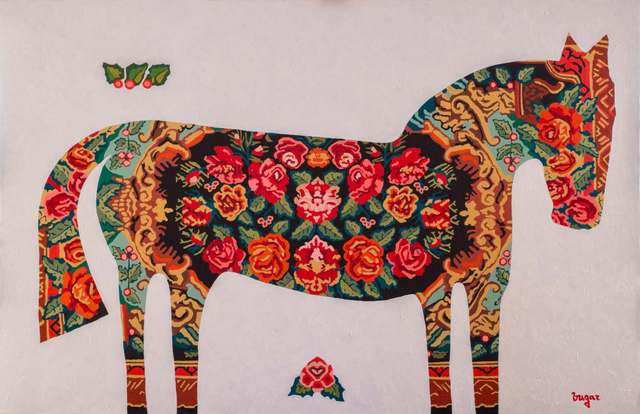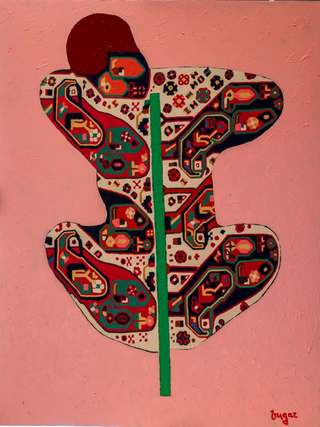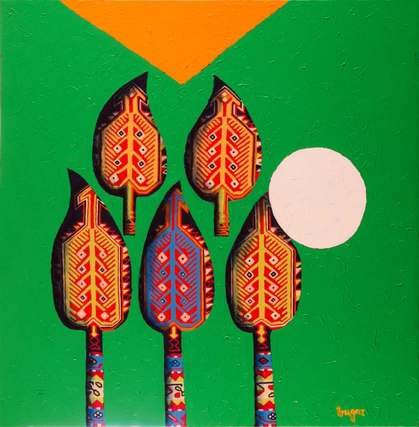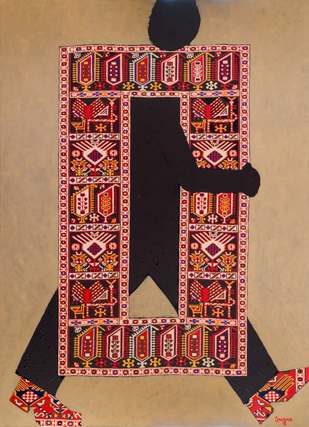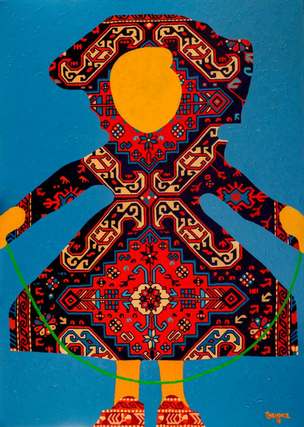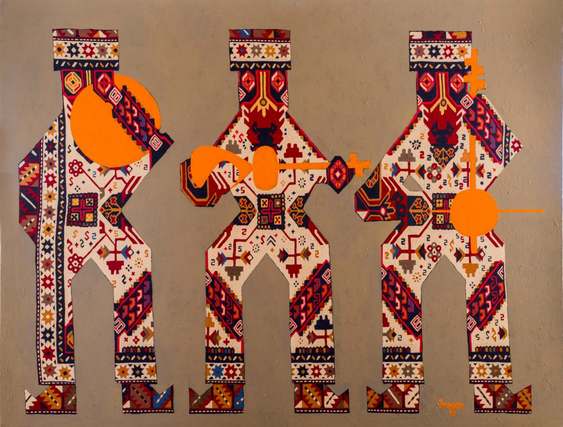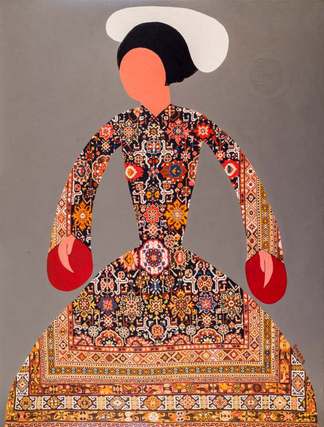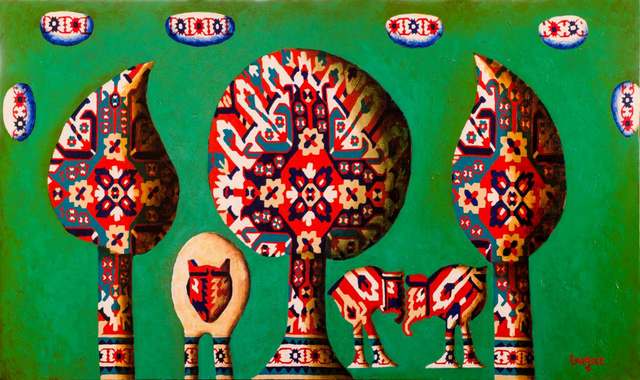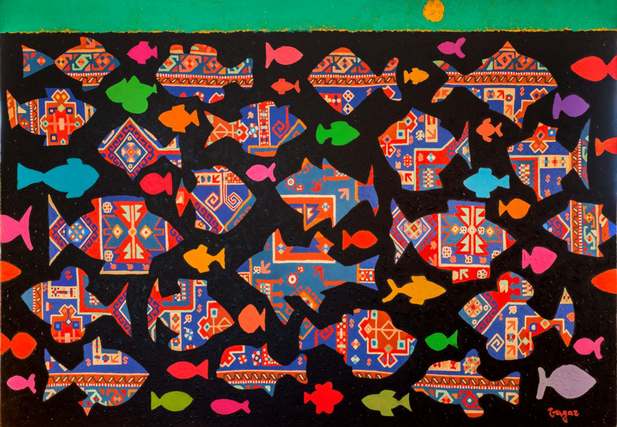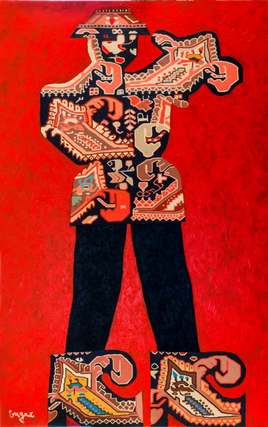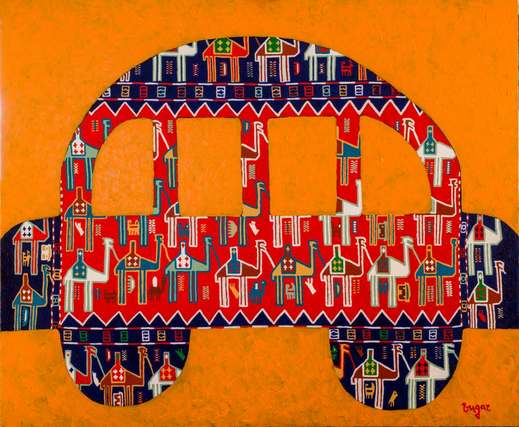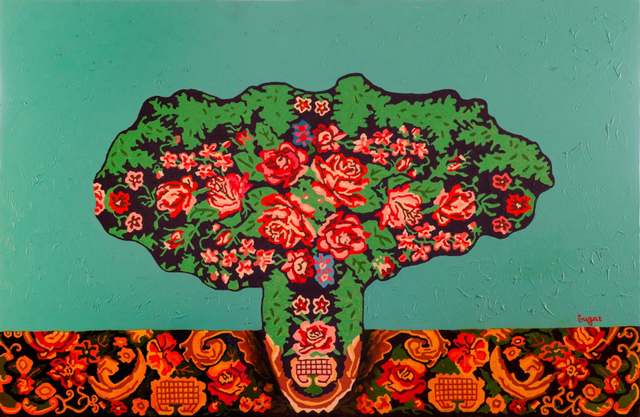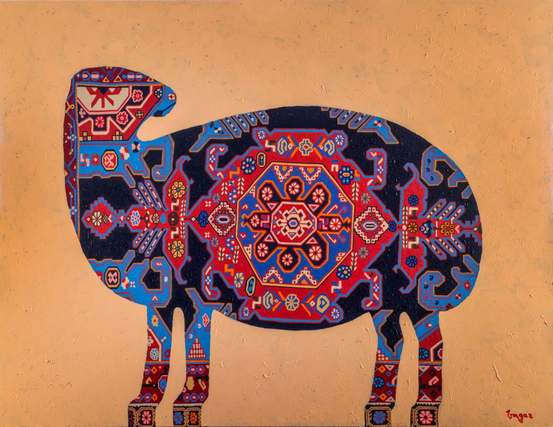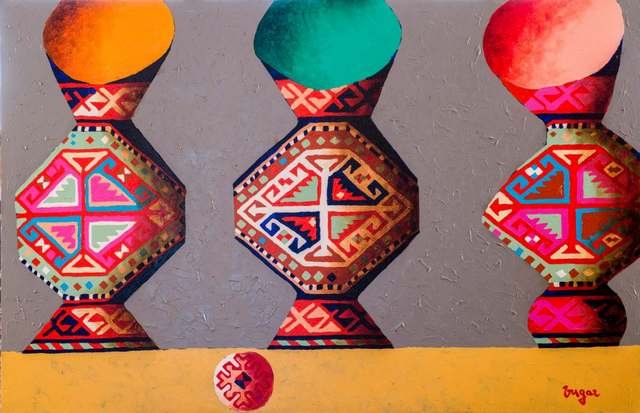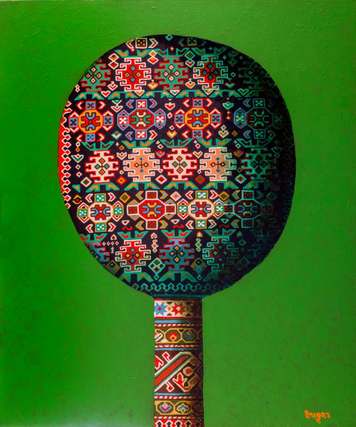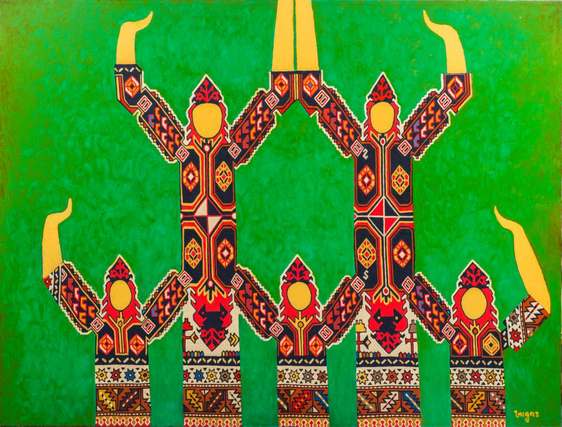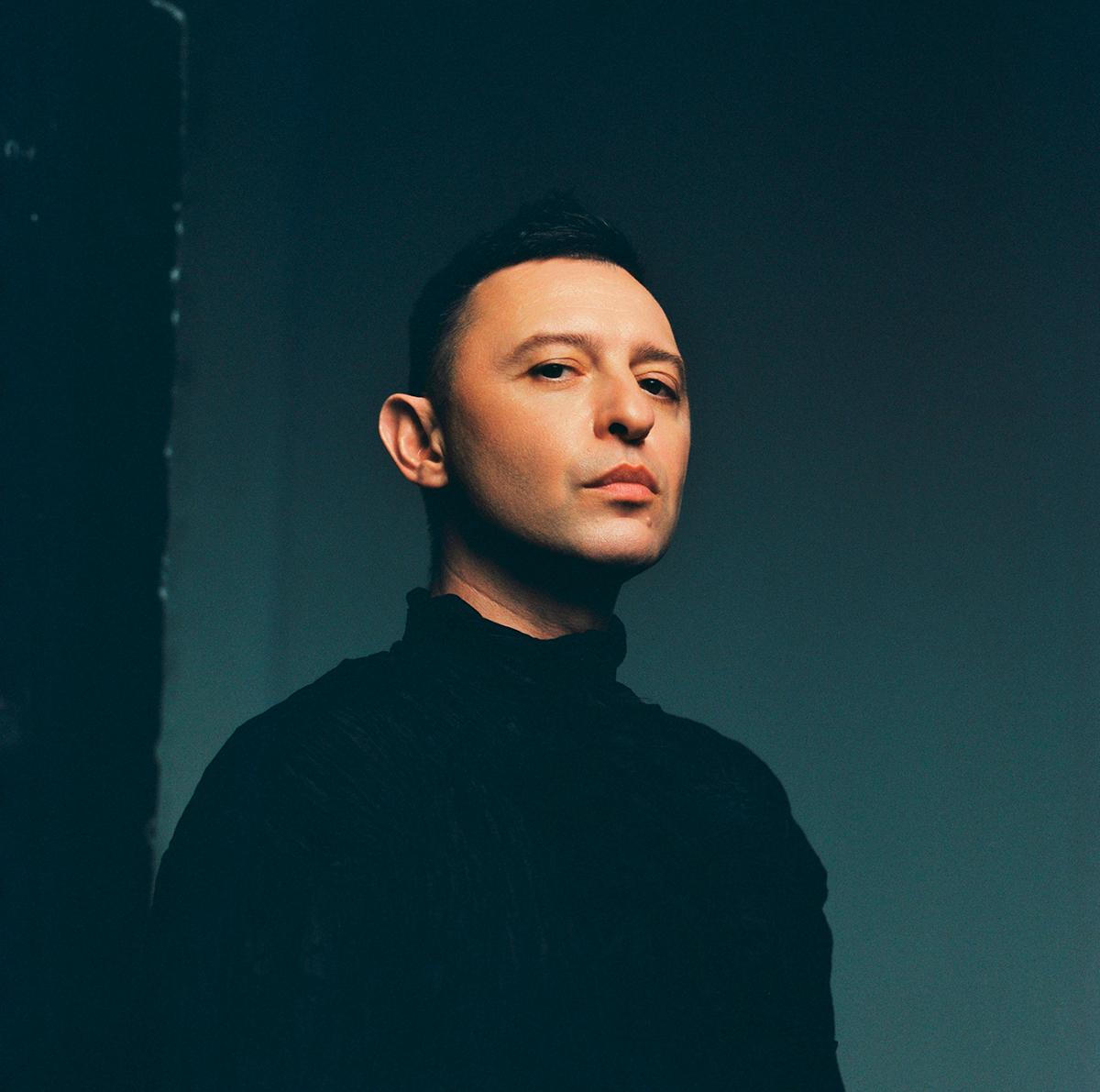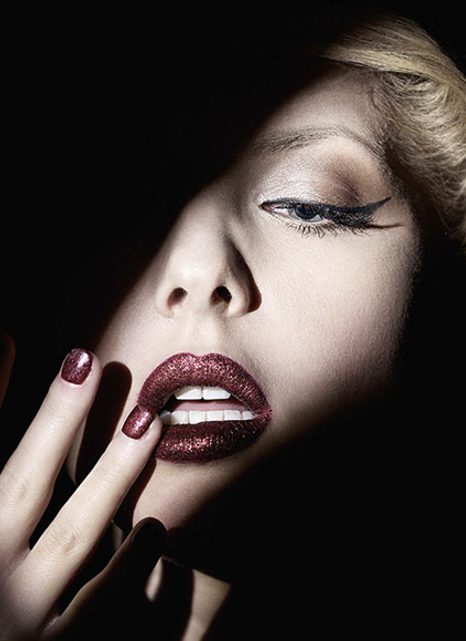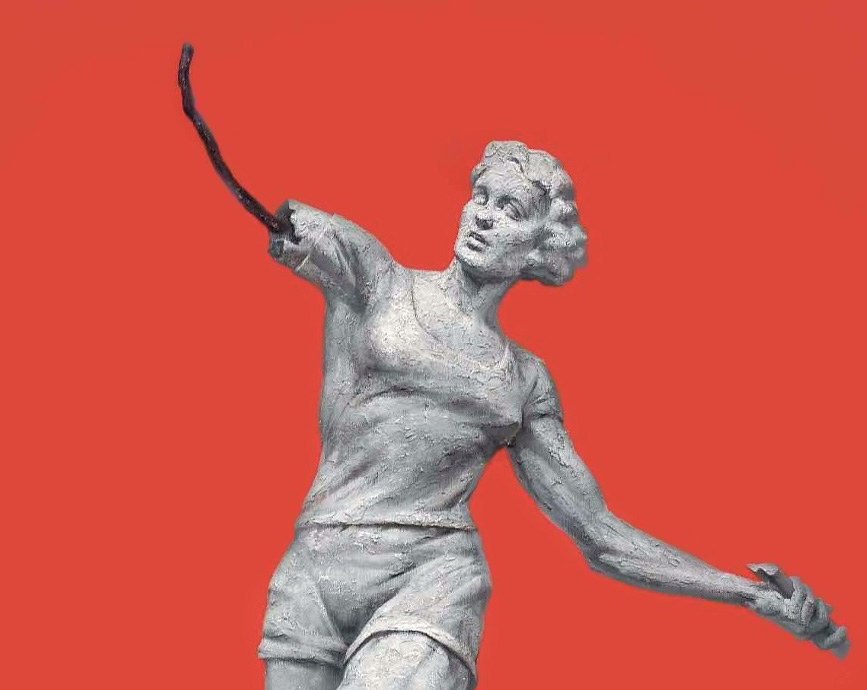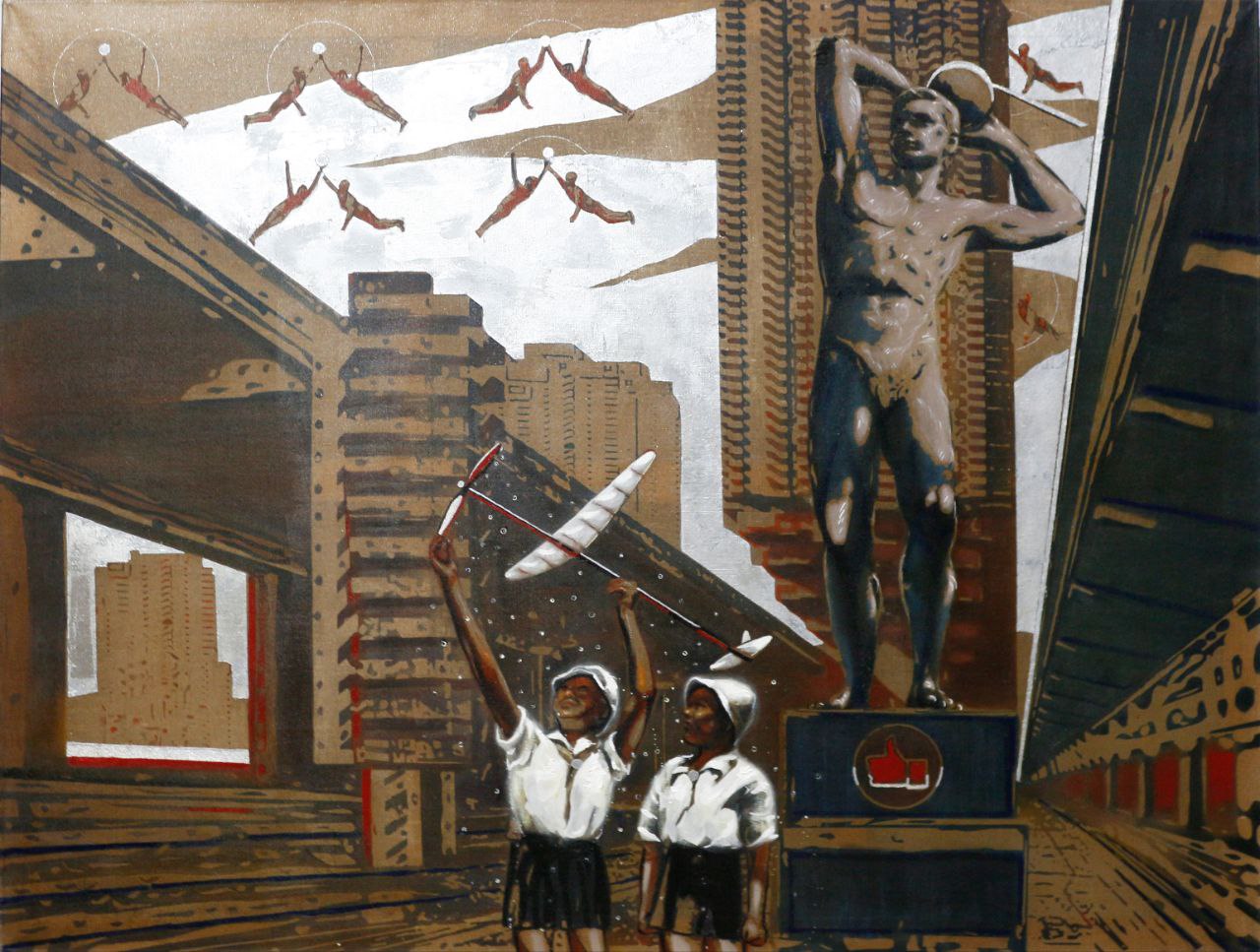Erarta Museum is proud to host the exhibition by the Azerbaijani artist Vugar Muradov. It presents a series of paintings based on the national carpets
- A fresh perspective on the conservative visual tradition of carpet making
- A carpet “comes to life”
- The meeting of the Eastern-Islamic and Far Eastern-Buddhist approaches to visual composition
- An opportunity to take a picture on the carpet background that won’t be embarrassing
Some artists are known for their experimentation with painting series when one, two or even three works are not enough to express the whole visual concept. Azerbaijani artist Vugar Muradov has recently adopted this approach, consistently developing his original artistic ideas.
And now he has dared to apply this method to the most precious Azerbaijani visual tradition — the carpet! Remember that the Azerbaijani art of carpet making while certainly ancient and fundamental to the ethos, is also an exceedingly conservative tradition, somewhat averse to modification of rules established over the centuries. Any innovation is discarded as suspicious and unnecessary. However, Muradov, in my opinion, has resolved this delicate matter in a most suitable way by adopting a sculptural approach to the image.
Michelangelo once said that his sculptures were already within the natural lumps of marble and that as a sculptor he only had to cut away the superfluous stone to release the artistic form. Vugar applies exactly this method. He selects a carpet that intrigues; it will be from one of the traditional centres of carpet weaving: Baku, Ganja, Qazakh, Shirvan, Shamakhi, Karabakh, Quba, Ardebil or Tabriz. He carefully studies the ornamentation and patterning to draw out the delineations of conventional figurative compositions that go unnoticed by the unfamiliar eye. He then mentally blanks out the rest of the design (not needed for the new composition visualised) and thus has a whole new image. All that remains is to apply his brush and reproduce it on canvas. The artist does all the work manually with resort to printing. It may look as though a prepared figurative stencil has been placed on the carpet to create a new composition, with the carpet's ornamentations added to the figure's plain ground. This is, however, no random imposition of a preconceived figure on a traditional carpet. The artist selects particular parts of the carpet and creates a new figurative image for those patterns and ornaments in such a fashion as to ensure a match or, more precisely, a connection between the image and pattern. This way certain ornaments are transformed into conventional eyes, face, headwear or clothing of the newly imposed figures (sometimes the artist adds a new element to create the composition integrity, for example, the musical instruments for a group of musicians…).
To cut a long story short, a new conditionally figurative composition is created, in which carpet-symbol representations of humans and animals lie on the monochrome background.
Is the artist somehow modifying the carpet with deformations of its structure, in the way other major painters do? Certainly not. He does not interfere with the traditional visual structure of the carpet. Leaving everything as it is, he simply applies a new compositional method (as described above, akin to the sculptural method of cutting away the “excess”) that allows certain selected carpet ornaments to coexist independently. These assertions are true, when talking about the visual representation of the series. However, what does the artist’s approach tell us?
It is commonly accepted that that Vugar Muradov rejected the principles of perspective, profound space that reflects visible reality in an illusionary way long time ago. The artist’s canvases celebrate a decorative plane and depict the surface — he remains faithful to the eastern principles of compositional space construction of the historical carpet and miniature arts. Nevertheless, in his carpet series we witness a rather complex interpretation of image and surface space. First of all, the artist stays true to his commitment to the plane — the painting consists of two independent visual planes. The artistically rich plane of the carpet, with its abundance of ornamental patterns, is combined with another plane of “derived” figures. Here the artist works within the visual (and conceptual) principle of the grid, as introduced by Rosalind E. Krauss, the American critic of modern art who considered the grid to be fundamental to all modern art, particularly in its purely abstract forms.
However, in Muradov’s carpet series, there is an inevitable artistic-figurative tension between the structures of the two planes. As the second “working” plane is imposed on the reality of the carpet, a considerable part of the carpet is removed and the “excluded” patterns are replaced by a smoothly painted monochrome plane. It is precisely this method that creates a certain innovative tension because it opposes the principles of carpet composition. After all a carpet composition assumes maximum differentiation of the visual space of the plane, every inch is replete with detail, thus the entire surface image of a carpet is filled to the rim with ornamental forms. Even if there should be some “free space” within this figurative diversity — there are certain carpets that are not filled 'to the brim’ — even then, this “free space” is an organically integrated part of the overall visual context and is not perceived as something heterogeneous. These carpet compositions present not so much an organic integration of two dissimilar visual structures, the carpet and a “stencilled” figurative composition, as a subtle confrontation, a barely recognisable dramatic conflict that doesn’t simply preserve the harmony of integrity, but brings a special poignancy to this integrity.
With all that we have indicated above, it is pertinent to indicate the connection to the principles of graphical composition in the visual art of the Far East, particularly in the pictorial art of China and Japan. Far Eastern art is notoriously sensitive to the blank space (under the influence of Buddhist philosophy and Taoist tradition that scrupulously developed concepts of emptiness): you will never see entirely filled space in works by Chinese and Japanese artists; usually dynamic visual elements occupy only a tiny area of a total space that remains, to a large extent, blank.
Thus, in his carpet series, Vugar Muradov unconsciously creates an unexpected synthesis of two conceptual approaches to visual composition, Eastern-Islamic and Far Eastern-Buddhist. This interesting and productive synthesis brings stylistic unity to the modern art of a diversified East that, being based on entirely different religio-philosophical traditions of Eastern art, has been unimaginable up until now. In other words, we witness a symbolic engagement of “the two Easts”.

